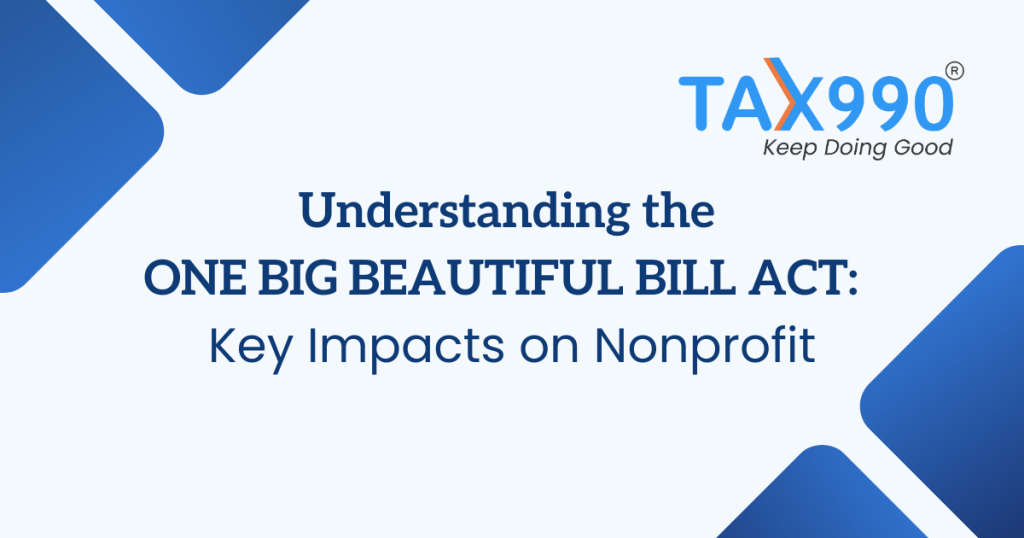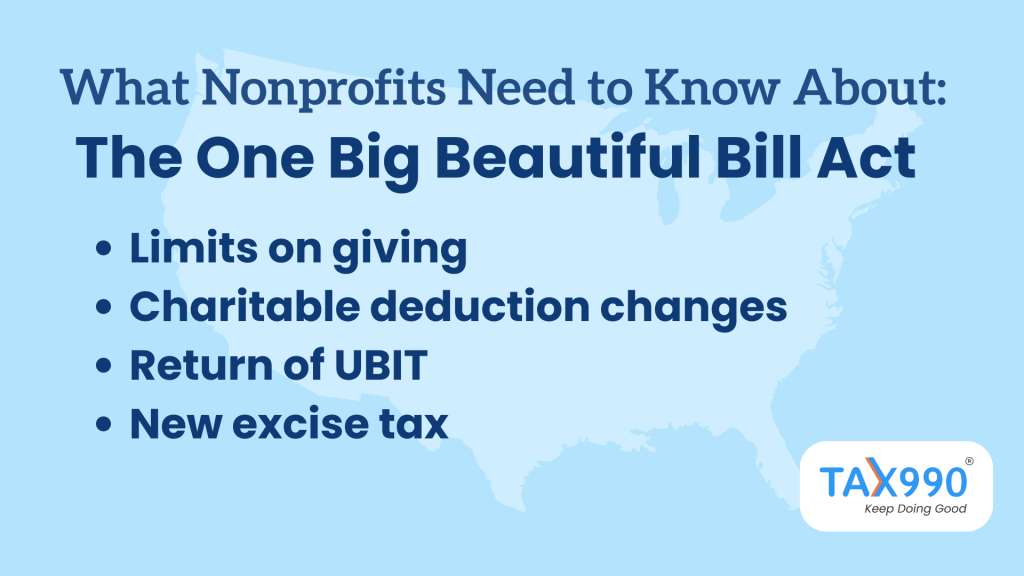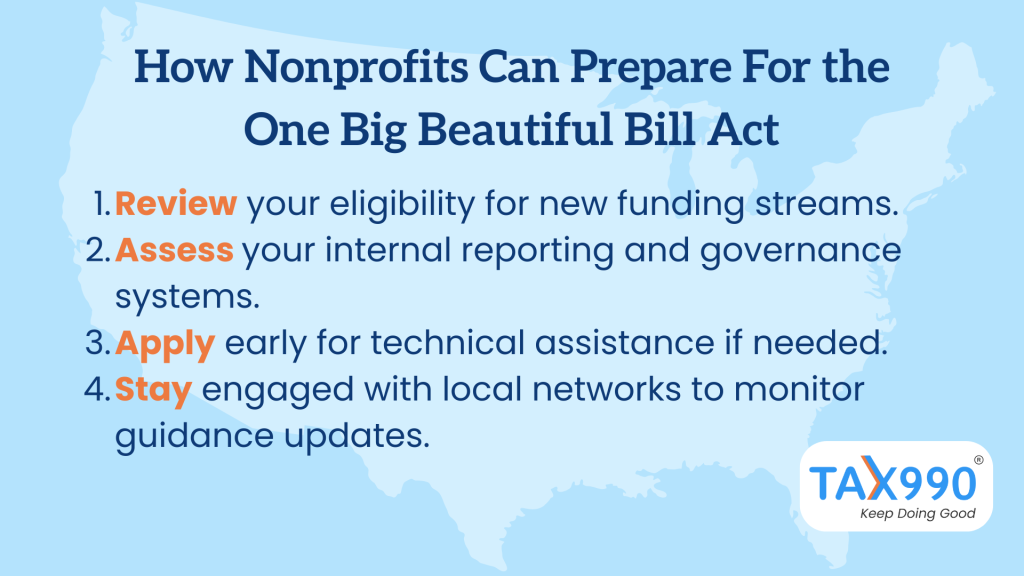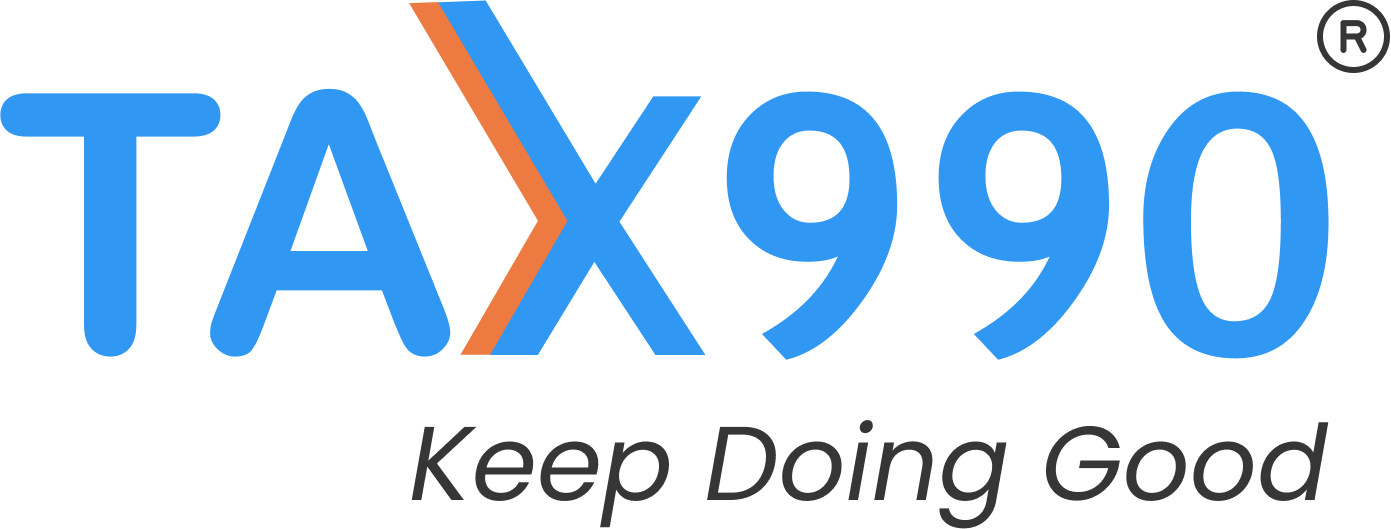Understanding the One Big Beautiful Bill Act: Key Impacts on Nonprofit
Estimated reading time: 12 minute(s)

The “One Big Beautiful Bill Act” (OBBA) has captured national attention for its sweeping scope and ambitious goals, but what does it mean for the nonprofit sector? As legislation that touches everything from federal funding to regulatory frameworks, this bill carries significant implications for how nonprofits operate, report, and sustain their missions.
Whether you lead a small community-based organization or a large national nonprofit, understanding the key provisions of this bill is essential for adapting to new requirements, seizing emerging opportunities, and continuing to serve your community effectively.
What Nonprofits Need to Know

New universal charitable deduction
The One Big Beautiful Bill Act introduces a new universal charitable deduction starting in 2026, allowing non-itemizers to deduct up to $1,000 (2,000 for joint filers), potentially boosting donations from everyday givers.
While this is a win for nonprofits, the law also adds new limits for high-income donors and corporations, including adjusted gross income (AGI) floors and deduction caps that could reduce large-scale giving. Nonprofits should adjust fundraising strategies to reach new donors, educate major supporters on timing their gifts, and prepare for changes in corporate and endowment-related giving.
Caps and floors on itemized and corporate giving
Starting in 2026, individuals who itemize can only deduct the portion of donations that exceeds 0.5% of their income, while corporations face a 1% AGI floor and tighter rules on carrying forward unused deductions. Additionally, all charitable deductions are capped at a 35% tax rate. These changes may reduce the incentive for large gifts, so nonprofits should help donors plan accordingly and shift messaging to highlight mission impact over tax benefits.
Excise taxes on foundations, endowments, and executive pay
There will also be a new excise tax that could significantly impact nonprofits with large endowments or high-paid staff.
Starting in 2026, a 21% tax will apply to compensation over $1 million for any employee, not just top earners. Private foundations will face a new tiered excise tax based on asset size, while wealthy colleges and universities may see endowment taxes as high as 21%. The law also reinstates a 21% tax on transportation benefits. Nonprofits should assess their exposure, adjust compensation strategies, and prepare for increased costs affecting their budgets and grantmaking capacity.
Return of UBIT for parking and transit benefits
This bill will reinstate a 21% Unrelated Business Income Tax (UBIT) on employer-provided parking and transit benefits for most nonprofits. This means organizations must treat the value of these benefits as taxable income and report it on Form 990-T if total UBTI exceeds $1,000. Nonprofits should review their transportation benefit policies, track related expenses carefully, and plan for potential increases in tax and administrative costs.
Requirements and Opportunities
Under legislation, nonprofits receiving federal funds may face expanded reporting obligations, including detailed impact metrics and financial disclosures. Eligibility provisions emphasize organizational good standing, alignment with federal priorities, and, in some cases, the completion of independent audits.
At the same time, the bill opens access to significant new funding streams, supporting programs related to public health, education, climate initiatives, and economic development. It also encourages partnerships between nonprofits, government agencies, and the private sector. Advocates suggest the measure could enhance nonprofit capacity and visibility, while critics caution about increased administrative burdens and compliance costs.
How Nonprofits Can Prepare For the OBBA
- Review your eligibility for new funding streams.
- Assess your internal reporting and governance systems.
- Apply early for technical assistance if needed.
- Stay engaged with local networks to monitor guidance updates.

File with Tax990 to Stay Compliant
Staying compliant and strategic has never been more important for nonprofits than now. With new tax implications, revived deductions, and expanded reporting expectations, organizations need tools to simplify the process of filing. Tax990 helps you meet every requirement with confidence while using your Form 990 to highlight your mission, impact, and transparency.




Leave a Comment